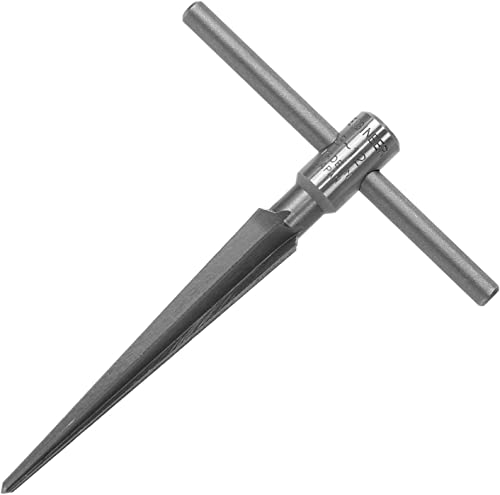Yes, a reamer can be used on ferrous metals
Reaming is a machining process used to enlarge holes to precise dimensions and improve their surface finish. It involves the use of a reamer, a cutting tool with multiple flutes that removes material from the hole as it is rotated. While reaming is commonly associated with non-ferrous materials such as aluminum and brass, the process can also be effectively used on ferrous metals. In this article, we will explore how reaming can be used on ferrous metals, its benefits, and considerations when using a reamer on this type of material.
Benefits of reaming ferrous metals
There are several benefits to using a reamer on ferrous metals:
1. Improved accuracy: Reaming can help achieve higher dimensional accuracy, ensuring that the hole is precisely sized and aligned. This is especially important in applications where tight tolerances are required.
2. Smoother surface finish: Reaming can improve the surface finish of the hole, removing any burrs or rough edges left by previous machining operations. This is particularly beneficial when the hole will be in contact with other components or when a high-quality aesthetic appearance is desired.
3. Increased productivity: Using a reamer can save time compared to other manual or semi-automated methods of hole enlargement. Reaming is a fast and efficient process that can be easily automated for large production runs.
Considerations when reaming ferrous metals
While reaming can be used on ferrous metals, there are some considerations to keep in mind:
1. Material hardness: Ferrous metals, such as steel, are known for their hardness. When reaming such materials, it is essential to use a reamer made of high-speed steel (HSS) or carbide, as these materials can withstand the high cutting forces and temperatures associated with reaming ferrous metals. Reamers made specifically for ferrous metals are available and have special coatings to reduce friction and increase tool life.
2. Cutting speed and feed rate: Reaming ferrous metals requires using appropriate cutting speeds and feed rates to prevent tool wear and overheating. Using the manufacturer’s recommended speeds and feeds for the specific material being worked on is crucial to ensuring optimal performance and tool longevity.
3. Lubrication: Lubrication is essential when reaming ferrous metals to reduce friction and heat generation. Using a suitable lubricant can help prolong the life of the reamer and improve the surface finish of the hole. Cutting fluids, such as oils or emulsions, are commonly used for lubricating during reaming operations on ferrous metals.
Reaming ferrous metals applications
Reaming ferrous metals can be applicable in various industries and applications:
1. Automotive: Reaming is commonly used in the automotive industry to enlarge holes in engine blocks, cylinder heads, exhaust manifolds, and other components made of ferrous metals.
2. Aerospace: The aerospace industry often requires precise hole enlargement in components made of high-strength ferrous metals, such as turbine blades and engine casings. Reaming can be used to achieve the required dimensional accuracy and surface finish in these applications.
3. Metal fabrication: Reaming is also used in metal fabrication processes, such as the production of gears, shafts, and bearings. These components often require precise holes for proper assembly and functionality.
In conclusion
Yes, a reamer can be used on ferrous metals. Reaming ferrous metals can improve accuracy, surface finish, and productivity. However, it is important to consider the material hardness, cutting speed, feed rate, and lubrication when reaming ferrous metals. By following these considerations and using appropriate tools and techniques, reaming can be an effective and efficient method for hole enlargement in ferrous metals in various industries and applications.






